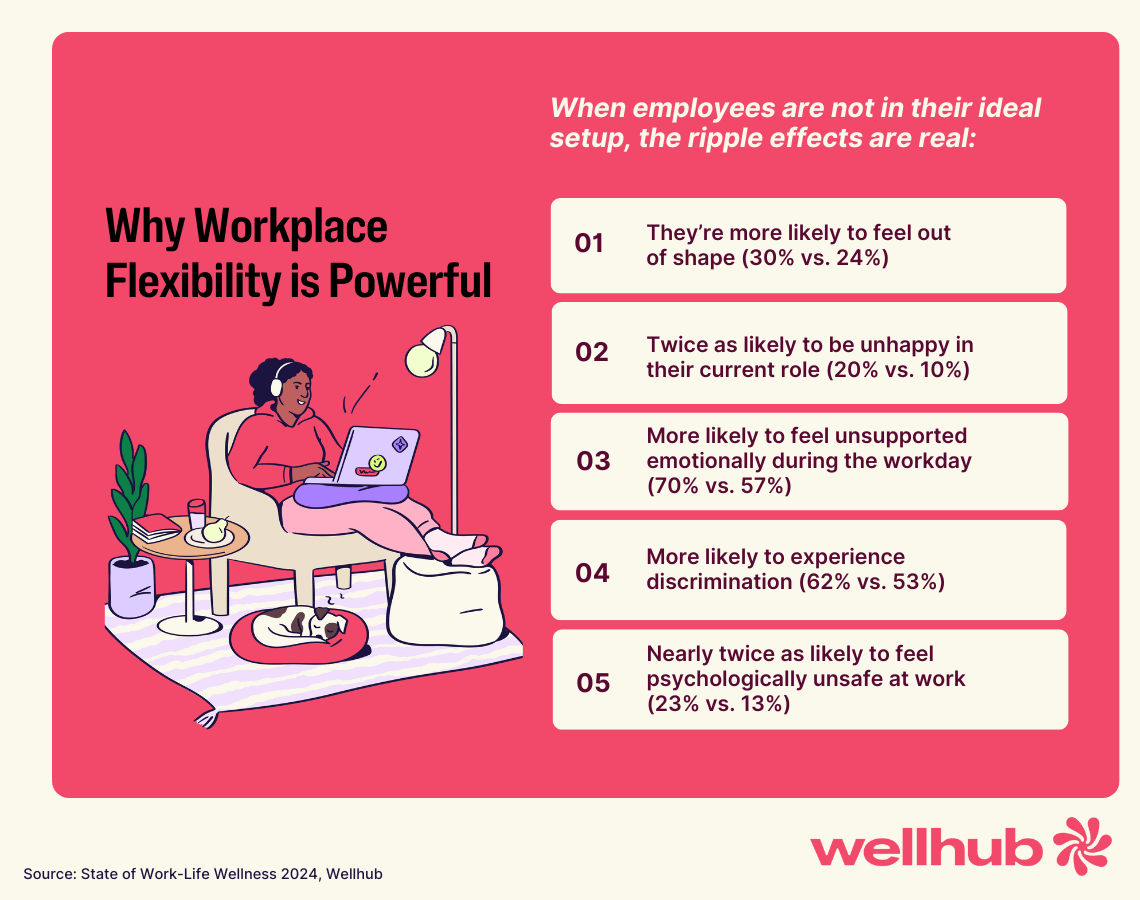Quiet Quitting: What It Is and How to Re-Engage Employees
Last Updated Jul 23, 2025

Pretty much every business around wants high employee engagement — it can increase profitability, competitiveness, and retention. But right now many companies are worried about losing their employee engagement to quiet quitting.
So what is quiet quitting? Is it actually a problem? And how do you handle it? Let’s walk through the key points of quiet quitting, and what this trend is really saying about workplaces.
What Is Quiet Quitting?
Quiet quitting is when a previously engaged employee starts to do the bare minimum, exerting no more effort than is required to stay employed. As the World Economic Forum puts it, employees are “doing what’s required and then getting on with [their] life…”
While a 44-year-old career coach is credited with coining the term in March of 2022, the phrase was popularized by a viral TikTok several months later. In the video, 24-year-old software programmer Zaid Khan explains that quiet quitting isn’t physically leaving your job but “quitting the idea of going above and beyond.”
What does this look like in practice? It could be teammates no longer attending non-mandatory meetings, not showing up early or staying late, and not doing things traditionally meant to demonstrate particular loyalty to a job or company. They fulfill their job description and nothing more.
What Causes Quiet Quitting?
People generally agree on what quiet quitting is: doing what’s required stopping there. But whether this is problematic depends on who you ask.
Supporters of quiet quitting see it as setting healthy boundaries. People still get quality work done. What they drop is the excess effort that isn’t required to get the job done, the work that overburdens. Quiet quitters say this approach allows them to facilitate work-life wellness and avoid burnout. Such supporters point out that, despite the new name, this is not a new phenomenon — other generations have called it slacking, coasting, or checking out, and each has faced its own phase of reckoning to determine where wage work fits within life at large.
Those who hear ‘quiet quitting’ and cringe see the decreased efforts as a way for workers to keep the job on a technicality and while avoiding the level of engagement required to do a job well done. They see it as a troubling trend that decreases productivity, lowers morale, and decreases the value companies derive from their salary expenditures. Quiet quitters, they say, are those who no longer care about their contributions, driving a deterioration in the quality and/or quantity of the work produced.
Setting Healthy Boundaries or Low Engagement?
This conversation lumps two types of employees under the “quiet quitter” banner.
The first group, the group that aims to avoid burnout and stay focused on what matters at work, should be supported and praised. Hustle culture and burnout are plaguing the American workplace. This year 75% of individuals have reported experiencing burnout at work. Teammates across the board should be supported in preventing burnout so that they can maintain fulfilled and happy lives. These are the employees working towards wellness.
The second group, those who don’t care and are only doing enough to avoid a pink slip, seem to have hit burnout and kept going. This group is likely the result of hustle culture left unchecked. Too tired to muster motivation for their work, having been failed by the wellness systems (or lack thereof) in the workplace, they push through with the bare minimum.
It’s not shocking if either description sounds like some of your coworkers. Gallup estimates that quiet quitters (defined as “people who do the minimum required and are psychologically detached from their job”) make up 50% of the workforce. This research also finds that for every productive individual, nearly two are actively disengaged, which is the worst ratio in almost a decade.
So, disengagement is rampant — but the good news is management has it in their power to help both of these groups!
7 Ways to Re-Engage Quiet Quitters at Work
That the idea of “quiet quitting” resonates with millions of people is revealing. It shows how many workers feel overburdened and under supported in their current job. Quiet quitting is a natural response to experiencing burnout and disregard.
When put in that light, the solution to quiet quitting is to create an environment where nobody feels pushed to the breaking point. Fostering that kind of workplace is reliant on the quality of a company’s management and wellness systems, not the can-do spirit of individual employees.
So how can you create a workplace that doesn’t foster quiet quitting? Here are seven actions you can take to start re-engaging both types of quiet quitters.
Evaluate Workloads and Account for Increased Responsibilities in Job Descriptions (and Pay!)
If an employee has taken on additional responsibilities over time but their compensation has not adjusted accordingly, this may breed resentment that drives disengagement. Check in with employees to see what tasks they are performing and compare it to their job descriptions. If you find team members successfully operating beyond their formal role, consider exploring promotions or salary increases that recognize their increased contribution.
Check in With Management
Support and engagement trickles down — managers have to be adequately supported in order to support their staff. Consider surveying your managers about their workload and the resources available to them, and what they feel would empower them to better support their staff.
Listen to Employees, Then Act
Interviews, surveys, and more are great ways to hear from your team members. This gives you the chance to identify improvements that would increase employee engagement, and to show that you care about employee input. Once you do collect their thoughts, communicate what was done with their feedback so they feel recognized. You can cite staff surveys when explaining new changes to the company handbook, for example, or use a company-wide town hall to share how employee feedback shaped next quarter’s strategy.
Support Flexible Work Arrangements
The 9 to 5 work day is not sacrosanct. If your employees can do their work from home or asynchronously, allowing that can make it easier for people to achieve work-life wellness. If, for example, a mother needs to pick up her kids from school in the afternoon, remote work with flexible hours makes it easier to get her kids without worrying that she will be seen as less committed than her childless peers. This kind of accommodation can help reduce stress, decreasing the likelihood of burnout.

Conduct a Compensation Analysis
Are your salaries competitive in your industry and region? Are they equitable internally between employees? If any of this is out of balance, it can cause dissatisfaction that pushes employees to tune out. A compensation analysis reviews your pay practices to assess equality and competitiveness, which could help you spot employees at risk of feeling undervalued.
Create a Positive Company Culture
Company culture is so important that 46% of individuals look for company culture “fit” before accepting a job. Culture encompasses the quality of the working environment. A positive culture is one where employees feel supported and set up for success. It’s a workplace where, if an employee says their workload has become too much to handle, the situation is addressed. Staffers know their input is respected and taken into account. When workers do go above and beyond, that extra work is recognized, not taken for granted. Ensuring managers are encouraged and empowered to meet their teams’ needs is foundational to building this kind of culture.
Encourage Activity
Implementing a wellness program can help your employees refresh and re-engage. Research shows that 70% of workers enrolled in a workplace wellness program have reported “higher job satisfaction” after enrollment and employees who exercise three times a week are 15% more likely to have a better job performance. You can encourage employees to stagger meetings so they have time to take a walk in between calls, or provide access to more than 50,000 fitness providers and wellness apps by partnering with Wellhub.
Know the Signs: Examples of Quiet Quitting
By definition, quiet quitting doesn’t announce itself with a resignation letter. More often, it shows up quietly—in decreased participation, reduced energy, and a pullback from purpose. These shifts aren’t about laziness. They’re usually symptoms of misalignment, burnout, or unmet needs.
Here’s what that can look like in action:
- Withdrawing from Team Conversations
What to Look For: An employee who once actively contributed now sits silent in meetings. They may avoid cameras, skip optional brainstorms, or disengage from team chat.
Why It Matters: Collaboration is about connection. When an employee pulls away from conversations, it may signal emotional or mental fatigue—or a growing sense that their voice isn’t valued.
- Meeting the Letter, Not the Spirit, of Their Role
What to Look For: They do what’s asked—no more, no less. Tasks are completed but lack the thoughtfulness or initiative you once saw.
Why It Matters: People thrive when they feel inspired, not just obligated. If someone is operating in survival mode, it may be time to revisit role clarity, purpose alignment, or wellness support.
- Disengaging from Company Culture
What to Look For: They’ve stopped attending social events, recognition programs, or wellness activities—even ones they previously enjoyed.
Why It Matters: A lack of participation can stem from fatigue or a feeling of disconnect. It’s not about pizza parties—it’s about belonging.
- Increased Time Off—Without Recharging
What to Look For: You notice more PTO requests, late arrivals, or early departures—but without the signs of renewed energy afterward.
Why It Matters: Rest is vital. But when someone returns from time off still drained, it suggests the real issue may be unresolved stressors at work.
- Quietly Opting Out of Growth
What to Look For: They pass on stretch opportunities, skip development programs, or show hesitation around feedback.
Why It Matters: When employees feel stagnant or unsupported, they may stop envisioning a future at your organization. That’s a missed opportunity—for them and for you.
How HR Can Respond to Quiet Quitting with Empathy
| Quiet Quitting Sign | Supportive Response |
|---|---|
| Withdrawing from meetings | Schedule a one-on-one check-in to reconnect and listen actively |
| Just meeting job expectations | Clarify the impact of their work and explore what energizes them |
| Disengaging from culture | Reassess if culture initiatives feel inclusive, accessible, and meaningful |
| Using PTO without benefit | Invite a wellness conversation to understand what true rest might look like |
| Avoiding growth opportunities | Offer flexible development options that respect time and wellbeing |
Build Systems That Put Employee Wellness First
Quiet quitting isn’t just a Tiktok-transmitted scourge of flighty young. Yes, your young, Gen-Z co-workers are reporting high levels of workplace disengagement — but they are waving the flag to draw attention to ways the workplace can be improved to better support overall wellness.
With clear communication, expectations, support and boundaries, companies can create an environment where employees feel cared for and understood—which ultimately negates a need for quiet quitting at all.
Speak with a Wellbeing Specialist to find the best solution for your company needs!

Company healthcare costs drop by up to 35% with Wellhub*
See how we can help you reduce your healthcare spending.
[*] Based on proprietary research comparing healthcare costs of active Wellhub users to non-users.
References:
- https://jobs.washingtonpost.com/article/productivity-matters-does-it-measure-up-where-you-work-/
- https://www.quantumworkplace.com/future-of-work/14-benefits-of-employee-engagement-backed-by-research
- https://www.weforum.org/agenda/2022/09/tiktok-quiet-quitting-explained/
- https://www.latimes.com/entertainment-arts/story/2022-08-27/la-ent-quiet-quitting-origin
- https://www.npr.org/sections/money/2022/09/13/1122059402/the-economics-behind-quiet-quitting-and-what-we-should-call-it-instead
- https://www.theatlantic.com/newsletters/archive/2022/09/quiet-quitting-trend-employee-disengagement/671436/
- https://www.newyorker.com/culture/2022-in-review/the-year-in-quiet-quitting
- https://www.travelperk.com/blog/remote-work-burnout-statistics/
- https://www.gallup.com/workplace/398306/quiet-quitting-real.aspx
- https://teamstage.io/company-culture-statistics/
- https://www.aflac.com/business/resources/aflac-workforces-report/default.aspx
- https://magazine.startus.cc/healthier-workers-productive-science-says-yes/
- https://www.gallup.com/workplace/398306/quiet-quitting-real.aspx
Category
Share

The Wellhub Editorial Team empowers HR leaders to support worker wellbeing. Our original research, trend analyses, and helpful how-tos provide the tools they need to improve workforce wellness in today's fast-shifting professional landscape.
Subscribe
Our weekly newsletter is your source of education and inspiration to help you create a corporate wellness program that actually matters.
Subscribe
Our weekly newsletter is your source of education and inspiration to help you create a corporate wellness program that actually matters.
You May Also Like

18 Ways to Lower Workplace Stress for Teams | Wellhub
Combat burnout, boost morale, and reduce turnover with stress reduction strategies every HR leader can use to build a healthier workplace.

How to Calculate and Reduce Employee Turnover Rate | Wellhub
Use this guide to calculate and analyze your employee turnover rate. Discover strategies to boost retention and reduce turnover in your organization.

How to Help a Workaholic Employee | Wellhub
Is your employee a workaholic? Discover the signs, causes, and how to help a workaholic achieve better work-life balance and improve productivity.